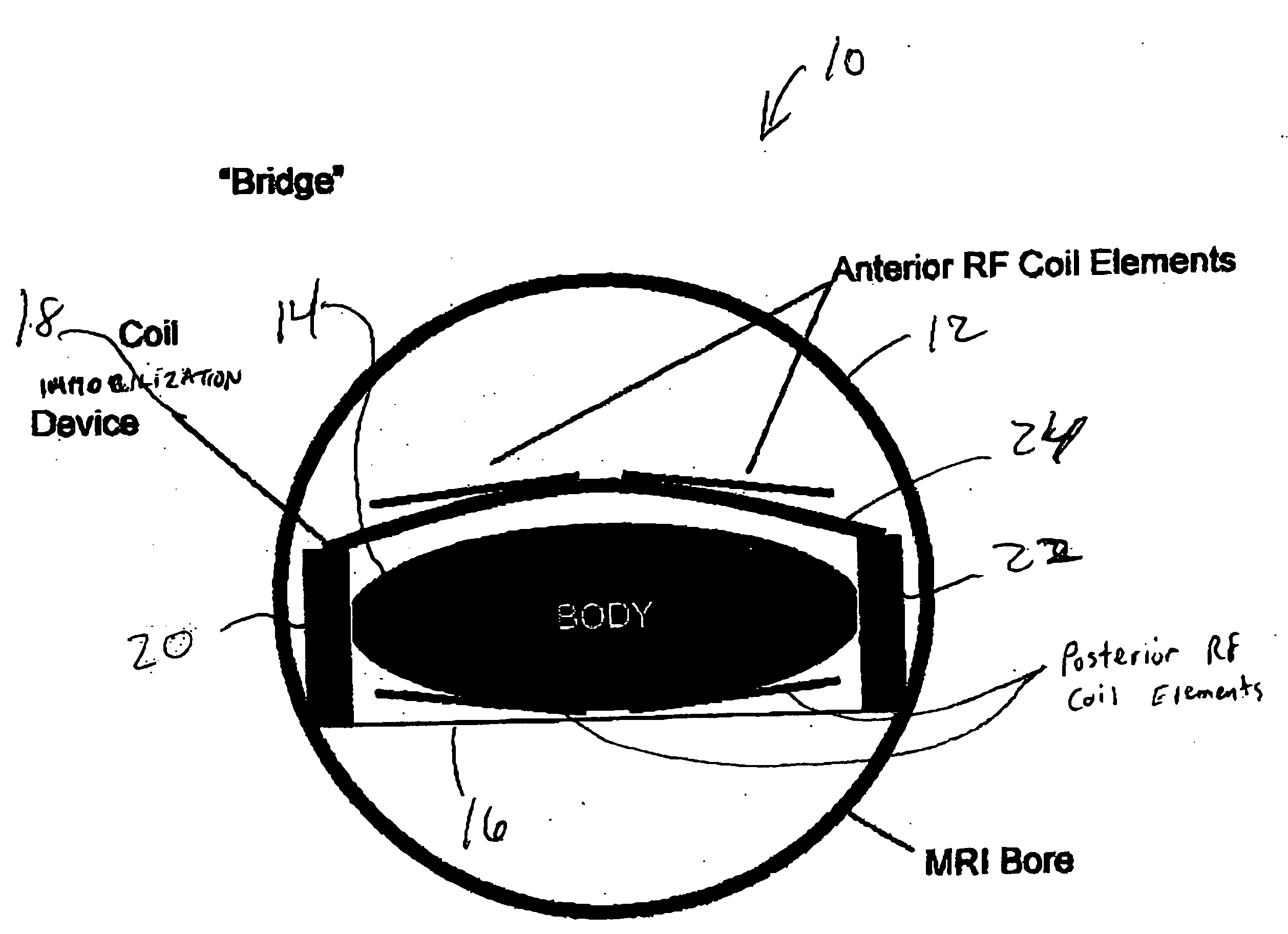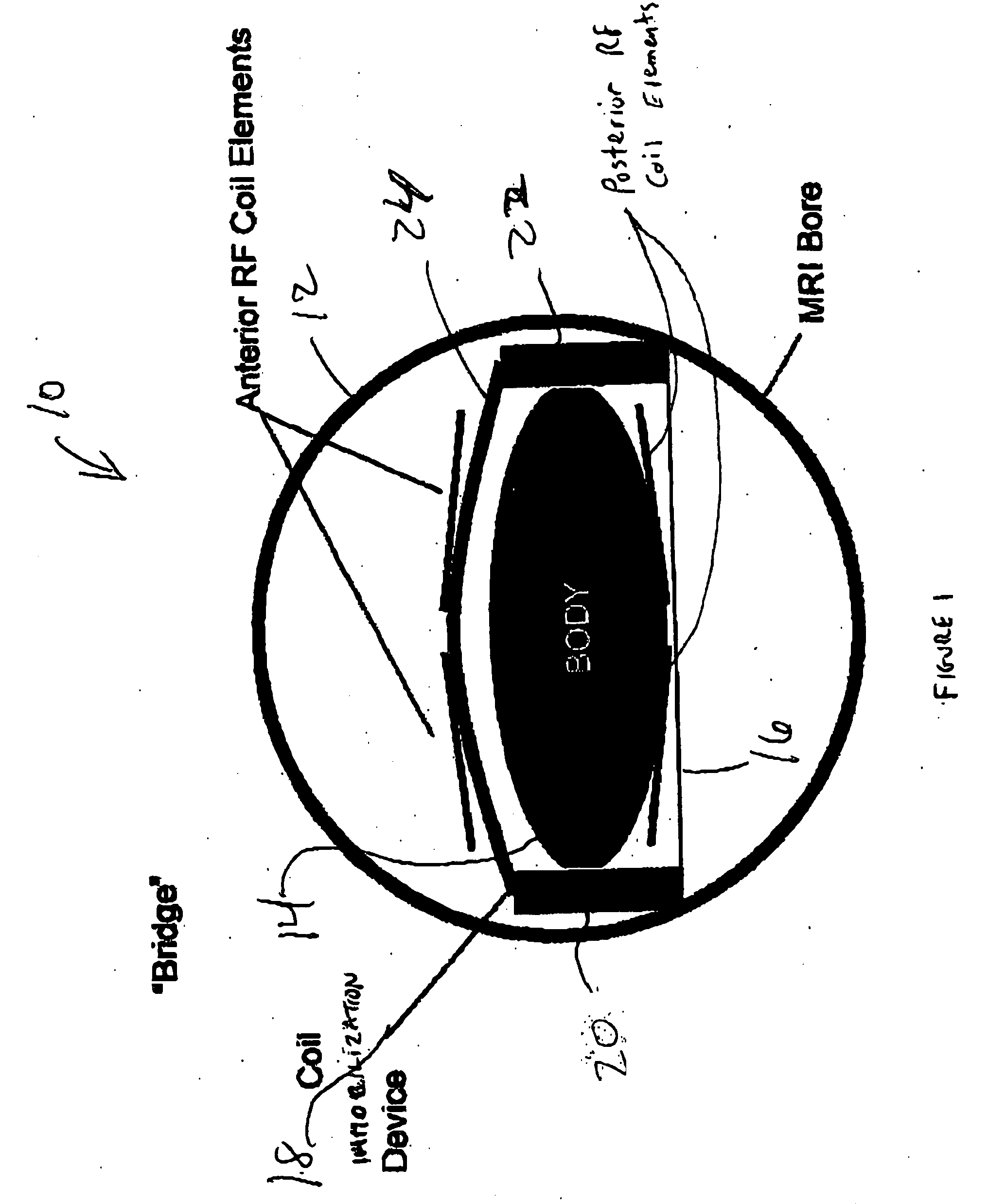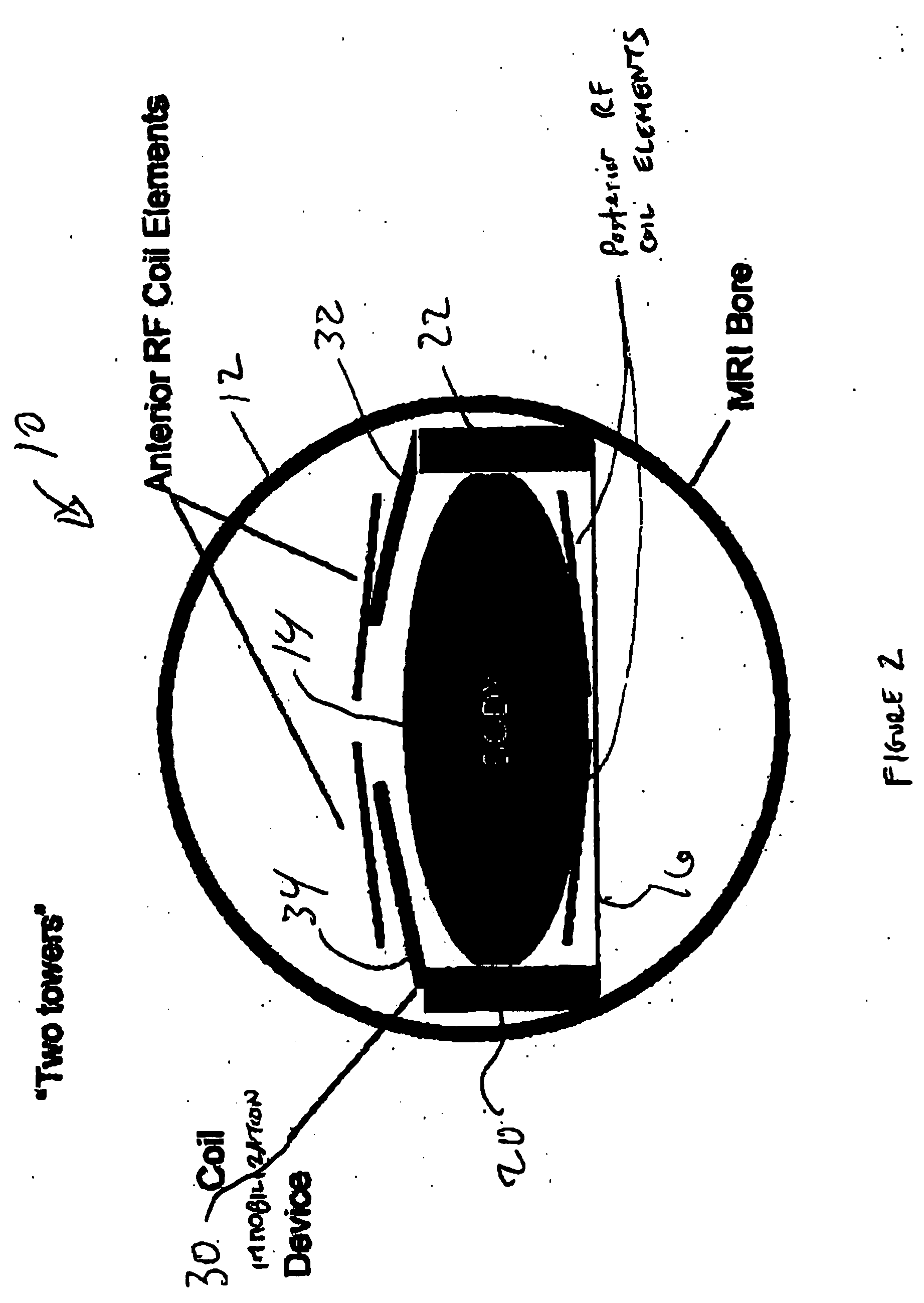Device for enabling reduced motion-related artifacts in parallel magnetic resonance imaging
a technology of motion-related artifacts and parallel magnetic resonance imaging, which is applied in the field of medical imaging, can solve problems such as pernicious sources of errors, errors in calibration, and images with aliasing defects called artifacts or ghost artifacts, and achieve the effect of eliminating any potential coil-displacement-related reconstruction effect or artifa
- Summary
- Abstract
- Description
- Claims
- Application Information
AI Technical Summary
Benefits of technology
Problems solved by technology
Method used
Image
Examples
Embodiment Construction
[0024] Referring now to FIG. 1, shown therein is a block diagram of an embodiment of a coil immobilization device in accordance with the present invention. FIG. 1 is a cross-sectional view of the body of a patient in the MRI bore of an MRI scanner. The MRI scanner includes excitation RF coils (not shown) for generating excitation magnetic fields that create changes in the magnetic spin moments of the atoms in the patient's body. The changes in the magnetic spin moments provides data that is recorded by the anterior and posterior imaging RF coil elements.
[0025] The anterior RF coil elements are statically held in place by the coil immobilization device. The posterior RF coil elements are integrated into a cushion (not shown) or the platform upon which the patient lies. The posterior RF coils cannot move regardless of whether the patient moves.
[0026] In current practice by those skilled in the art, the anterior RF coils are placed directly on the outer wall of the patient's body for...
PUM
 Login to View More
Login to View More Abstract
Description
Claims
Application Information
 Login to View More
Login to View More - R&D
- Intellectual Property
- Life Sciences
- Materials
- Tech Scout
- Unparalleled Data Quality
- Higher Quality Content
- 60% Fewer Hallucinations
Browse by: Latest US Patents, China's latest patents, Technical Efficacy Thesaurus, Application Domain, Technology Topic, Popular Technical Reports.
© 2025 PatSnap. All rights reserved.Legal|Privacy policy|Modern Slavery Act Transparency Statement|Sitemap|About US| Contact US: help@patsnap.com



